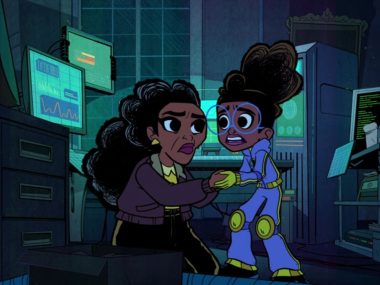Imagine your favorite TV series has returned with a new season. You’ve watched every episode and the finale has either left you feeling emotional or frustrated depending on how it ended.
But then you find yourself waiting two to three years at least until a new season premieres. What are the odds you’ll still care about that cliffhanger or whether your favorite couple will get together? As streaming services continue to compete with each other, are the shows with longer production times hurting themselves in the long run?
Why Streaming Originals Take So Long to Make
Traditional broadcast TV still churns out 10 to 20 episodes per season, with new ones arriving like clockwork every fall.
Streaming platforms don’t have a tight schedule to abide by. There’s less pressure to deliver new episodes by a certain date, which can lead to more relaxed (and longer) production times. Shows are written, shot, and edited in full before a single episode airs. Also, many streaming platforms wait weeks or months to decide whether a show gets another season. By the time the green light comes in, the cast is booked, the writers are busy, and the production clock hasn’t even started.
Another thing to keep in mind is the high production value streaming originals have. Many shows aim for a cinematic feel, with elaborate sets, special effects, and exotic location shoots. High-profile actors, writers and directors are brought in even if they’re juggling multiple projects. These higher standards require longer production and post-production times, especially for shows heavy on visual effects or international localization (like dubbing or subtitles).
Why the Current Model Isn’t Sustainable
For a while, this system worked. Big, buzzy shows could afford to vanish and return to much fanfare regardless of how long it was gone. But in today’s fragmented media environment where the average household subscribes to more than a dozen services, that kind of patience is wearing thin.
Audiences are overwhelmed and under-committed. They don’t want to wait several years for their favorite show to return. And with so many options available to them, they can always go find something else to watch.
What Could Fix This?
There are ways to shorten production times without sacrificing quality, if the industry is willing to adapt.
- Early Renewals: Give creators the green light before the current season ends. It worked for traditional TV, and it can work here too.
- Smarter Tech: Cloud-based editing, AI-assisted workflows, and modular production pipelines can drastically cut down turnaround time.
- Limit the VFX: Shows that lean on practical effects and grounded storytelling can get back on set (and back on screens) faster.
- Episodic Structures: Series that don’t rely on tightly connected plot arcs (or that film episodes out of order) can stagger production and shorten release delays.
Some shows are already leading the charge. Netflix’s Emily in Paris and Heartstopper managed to return with new seasons in under a year thanks to early planning and tighter scopes. FX on Hulu’s The Bear has stuck to a quick turnaround schedule that keeps fans engaged, with new episodes debuting every year in late June. Fans of Amazon Prime Video’s sci-fi series Fallout were shocked to learn the second season would premiere in December 2025, around 17 months after the series first debuted back in April 2024.
In a market where attention is everything, time is no longer a luxury. Streaming platforms may have disrupted how we watch TV, but now they’re faced with a new challenge: keeping audiences engaged in a world where waiting two years for a story payoff feels like a lifetime.
If the industry wants to bring slow-burn storytelling back, it has to move faster. Because if momentum dies, the story does too.






